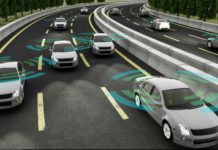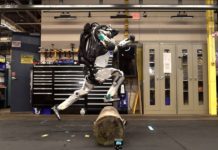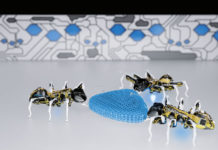Uber recently entered into a partnership with the Army Research Lab to help move the ridesharing company’s venture into flying taxi services forward. If it’s a success, it’ll be called UberAir.
Researchers are focused on rotor technology, which means the cars won’t look like those from “Back to the Future” – think cars that look more like helicopters and drones instead.
“[Uber] doesn’t build cars. They don’t build aviation platforms,” said Elias Rigas, chief of the Vehicle Applied Research Division at ARL’s Vehicle Technology Directorate. “But the Army develops technologies for both of those spaces. … That’s why they came to us.”
Uber wants to make flying cars that are quiet enough to use in an urban environment so they don’t disturb other citizens. The Army’s interested in working on quiet rotor technology for a few reasons, like making unmanned aerial vehicles (UAVs) stealthier.
“We’re looking at a next-generation unmanned aerial system that’s able to operate quietly in theater to give the soldier an advantage in how they operate, particularly in close combat,” explained Jaret Riddick, the director of the ARL Vehicle Technology Directorate.
Future vertical lift, which can make flights runway-independent and less of a logistics burden, is one of six modernization priorities announced by the Army in 2016, so really, the partnership is a win-win.
“We’re able to use that industry partnership to quickly transition the outcomes into an atmosphere where they can be developed into products and make it into the hands of a soldier,” Riddick said.
The University of Texas, Austin, is also involved in the partnership, which means its research partners and those from Uber can access ARL’s state-of-the-art facilities, which in turn helps them better understand the military’s challenges.
Like noise reduction, for example. It’s actually really important for military unmanned aerial vehicles operations.
Simply put, if you can’t hear the vehicle, it can’t be easily detected.
“We really want to make them quiet so our operational zone of these vehicles can be increased … without being identified,” said Rajneesh Singh, an ARL aerospace research scientist. “It has a direct impact on the survivability of these vehicles and accents the kinds of missions that these UAVs can perform.”
The UAVs the military has now are good. They just need to be better.
“These things need to last longer, go further, go faster, and they need to be significantly more reliable than they are now,” Rigas said.
So what’s Uber bringing to the table? It’s providing resources like facilities and hardware needed to conduct tests in the field. The data from those tests will complement the simulations that researchers will perform at ARL labs.


































